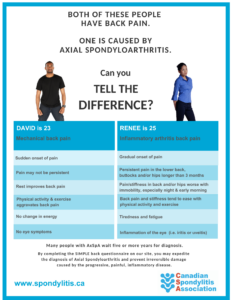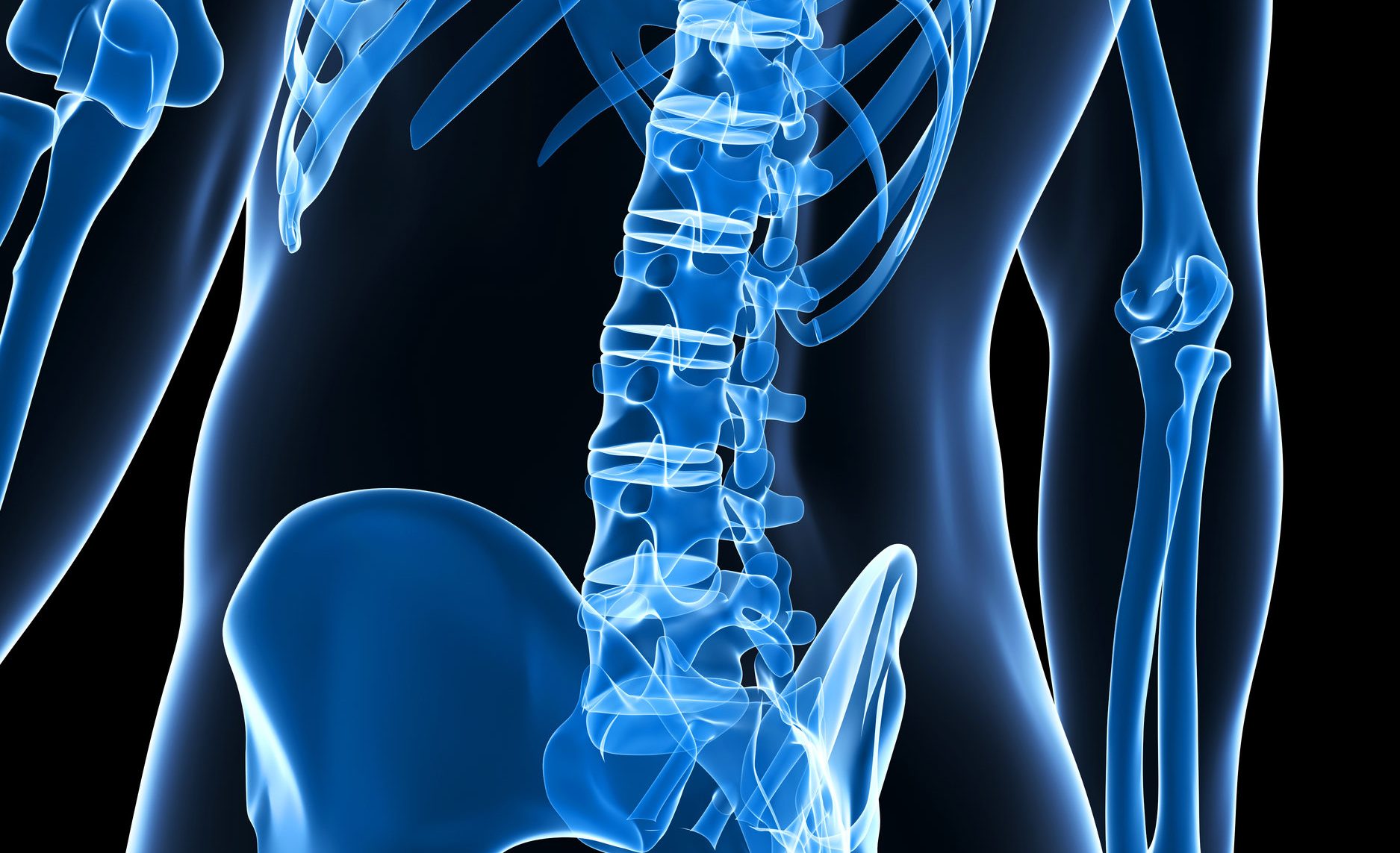Most people will experience back pain at some time in their life.
However, not all back pain is the same.
JUMP TO QUIZ
Mechanical vs Inflammatory Back Pain
Some back pain comes from some dysfunction in the structures that connect to your back, including the spine, muscles, and discs. This is called “Mechanical” or “Acute” back pain.
muscles, and discs. This is called “Mechanical” or “Acute” back pain.
Mechanical back pain can happen at any time in your life and generally come on quickly and lasts for a short period, up to a few months. It can also often be eased with rest and care from your doctor or other healthcare practitioner, like a physiotherapist.
If you’ve ever thrown your back out, or had a bout of sciatica, you’ve experienced mechanical pain.
However, there is another cause for back pain that can’t be traced back to a mechanical source.
Inflammatory back pain is caused by an autoimmune response, when your body attacks healthy tissues, causing inflammation and pain.
The pain comes on slowly and persists for many months or years. The pain and stiffness are usually worse in the morning but improves with some movement and light exercise.
Inflammation can be localized to your back and hips, but usually the inflammation causing pain is systemic, which means you may also experience pain or swelling in other parts of your body. Common areas include the eyes, ankles, and neck.
With your immune system working so hard against your body is also exhausting. It’s normal for someone experiencing inflammatory back pain to feel exhausted much of the time.
Could I have Spondyloarthritis?
The pain you are experiencing may be inflammatory, a condition broadly known as spondylitis (a term meaning inflammation of the spine). There are many things that cause spondylitis, including a condition called Axial Spondyloarthritis.
(You may also hear Axial Spondylarthritis (AxSpA) called Ankylosing Spondylitis (AS) or Non-radiographic axSpA (nr-AxSpA)).
Early Diagnosis is Important
Early diagnosis and treatment are vital to managing your condition and improving long term outcomes, including prevention of irreversible damage caused inflammation. If you think you have inflammatory back pain, take the quiz and discuss your concerns with your doctor.
Unfortunately, about half of the people with AxSpA wait five or more years for a diagnosis. Women can take an additional two years to be diagnosed.
When you complete the quiz, we will send your responses and tools you can use to track your symptoms and communicate your concerns. For more information on diagnosis, visit our Journey to Diagnosis page.
Spondylitis Questionnaire
| [ninja_form id=8] |
